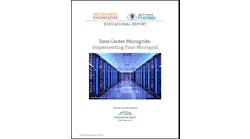You’re never too old to be green. At the ripe age of 125, Carnegie Hall has achieved silver certification in the U.S. Green Building Council’s LEED program.
This makes the famed concert hall one of the oldest and most notable buildings to achieve such distinction, according to Siemens, which helped modernize almost 165,000 square feet of non-performance space.
The facility won the LEED certification after completing its Studio Towers Renovation Project (STRP), an infrastructure upgrade for two towers originally added atop the hall at the end of the 19th century.
Here is video footage of the project.
As part of the Studio Towers renovations, Siemens supplied building automation, fire and life safety, and security systems to make Carnegie Hall more energy-efficient, safe and secure.
“It was a challenge retrofitting a nearly 125-year old building that had no original blue prints with technology that would modernize its energy efficiency, fire and safety systems, but as a result of these efforts, Carnegie Hall is now one of the oldest buildings to receive a LEED Silver Leadership certification.” said Dave Hopping, president of Siemens’ North American-based Building Technologies Division.
Carnegie Hall also now has a 10,000-square-foot roof terrace with reflective pavers and plantings that reduce the heat island effect and the building’s overall carbon footprint. The design took advantage of the hall’s 450 original windows on its upper floors to maximize natural light, complemented by LED bulbs and occupancy sensors.
***
The American Council for an Energy-Efficient Economy is offering a new Local Energy Efficiency Policy Calculator (LEEP-C), a decision making tool for local policymaking.
The calculator estimates the impact select public and residential buildings policies have on energy savings, cost savings, pollution, and other outcomes, according to a blog posted on ACEEE’s site.
This upgraded version (v. 1.0, released in 2011) includes the commercial building and transportation sector. Version 2.0 is being released as an open beta version, so ACEEE says it welcomes any feedback users have on the tool.
LEEP-C is just one of ACEEE’s to help local policymakers. (See the Local Technical Assistance Toolkit.)
The Washington, DC-based organization also released new resources on Local Government-Utility Partnership Strategies that expand its local toolkit. The four webpages outline strategies and best practices for local government-utility engagement to expand or improve energy efficiency in communities, according to the blog.
***
Mirror, mirror on the wall, who’s the most super-efficient light maker of them all. It turns out it’s Aura Light International, a Swedish manufacturer, which took first place in an international contest held by 17 countries, including the U.S.
Known as the Super-efficient Equipment and Appliance Deployment (SEAD) Initiative, the international initiative chose Aura Light for its planar luminaire. At 106 lumens per watt, it is nearly twice as efficient as traditional linear fluorescent luminaries used in commercial spaces.
If all fluorescent lighting installed in 2010 were replaced by with the SEAD award-winner, it would save 648 TWh annually, as much electricity as Sweden, Mexico, and Spain use annually together, according to a SEAD news release.
SEAD also recognized products that demonstrated the greatest energy efficiency among those available for sale in each of the four competition regions: Australia, Europe, India, and North America.
In the regional part of the competition, Aural Light International also took top place for Australia and Europe with its Lunaria LED Panel. Cree won first place for North America and Bajaj Electricals for India.
This is the fourth SEAD Global Efficiency Medal competition. The first three evaluated energy-efficient flat-screen televisions, computer monitors, and electric motors. A fifth competition for flat-screen televisions is under way. SEAD expects to announced the winners later this month.
Read more energy efficiency news and features by subscribing to the Energy Efficiency Markets newsletter.






